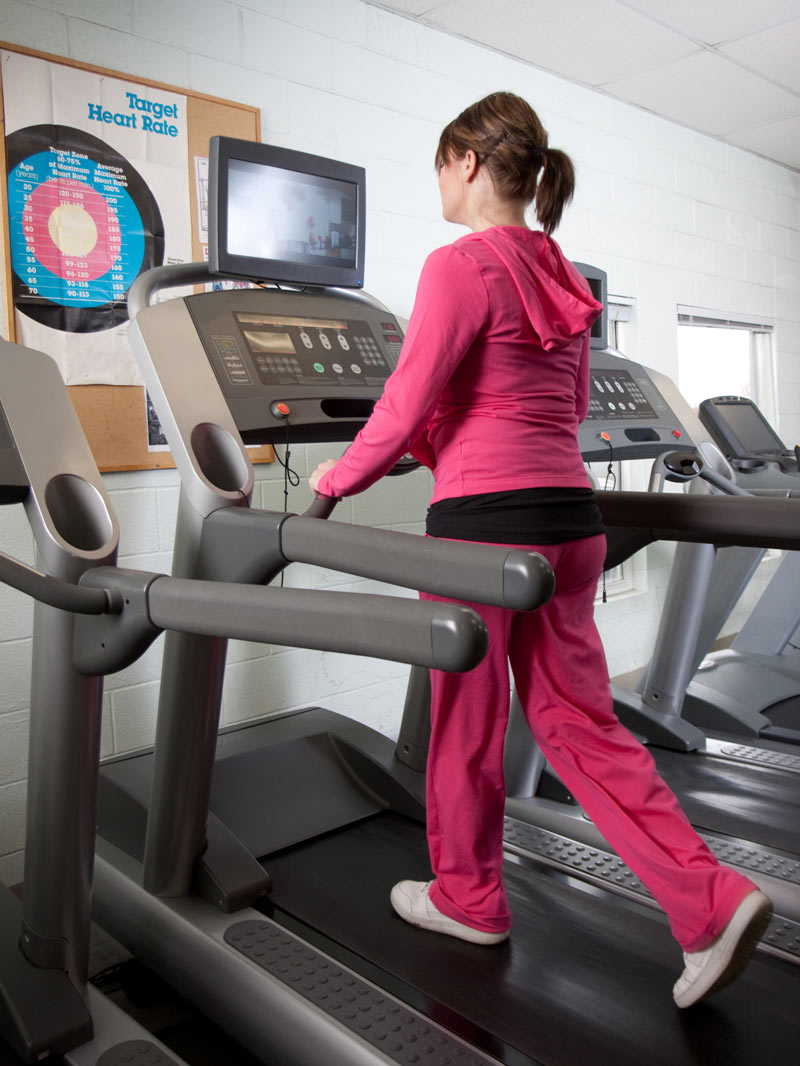 In a study that debuted at the National Athletic Trainers Association virtual meeting and was subsequently published later, a multidisciplinary team of clinicians sought to analyze the effects of visual gait biofeedback along with impairment-based rehabilitation on gait biomechanics in a group of patients with chronic ankle instability (CAI).1
In a study that debuted at the National Athletic Trainers Association virtual meeting and was subsequently published later, a multidisciplinary team of clinicians sought to analyze the effects of visual gait biofeedback along with impairment-based rehabilitation on gait biomechanics in a group of patients with chronic ankle instability (CAI).1
CAI is associated with several known deficits: diminished range of motion (ROM), postural control, and strength. Studies using traditional rehabilitation protocols have typically examined a single domain, such as balance, ROM, or strength and the improvements in that single domain have been validated. Impairment-based rehabilitation protocols are customized to individual patient deficits and studies have shown improvements in various CAI outcomes measures.
The authors had found only 2 previously published studies that had looked at biofeedback gait training to address CAI deficits. In both cases it was demonstrated that individuals with CAI can alter their gait mechanics in response to biofeedback, specifically reducing ankle inversion. How long the effect would last was not known. However, reducing ankle inversion during walking has the potential to reduce the risk of recurrent ankle injury in individuals with CAI leading these authors to suggest that offering gait training with an impairment-based rehabilitation program could improve an individual’s overall condition.
The purpose of their study was to examine the effects of 4 weeks of a visual biofeedback intervention with impairment-based rehabilitation on gait biomechanics, clinically oriented measures, and patient-reported outcomes between gait biofeedback (GBF) and no biofeedback (NBF) groups. They hypothesized that the GBF group would have a reduced ankle inversion angle at initial contact (IC) that would also translate to a less inverted position through the remainder of the stride cycle and that the NBF group would not change their gait kinematics. Further, they hypothesized that the groups would have meaningful changes in patient-reported and clinically oriented outcome measures as measured by minimally important changes.
They recruited 27 individuals with CAI (14 in the NBF group; 13 in the GBF group) for the 4-week study. Both groups received 8 sessions of impairment-based rehabilitation. The GBF group received visual biofeedback to reduce ankle frontal plane angle at IC during treadmill walking. The NBF group walked for equal time during rehabilitation but without biofeedback. Dependent variables included 3-dimensional kinematics and kinetics at the ankle, knee, and hip, electromyography amplitudes of 4 lower extremity muscles (tibialis anterior, fibularis longus, medial gastrocnemius, and gluteus medius), and patient-reported outcomes (Foot and Ankle Ability Measure Activities of Daily Living [FAAM-ADL], FAAM-Sport, Tampa Scale of Kinesiophobia [TSK], and Global Rating of Change [GROC]).
The GBF group significantly decreased ankle inversion at IC (MD: -7.3°, g = 1.6) and throughout the entire stride cycle (peak inversion: MD: -5.9°, g = 1.2). The NBF group did not have significantly altered gait biomechanics. The groups were significantly different after rehabilitation for the FAAM-ADL (GBF: 97.1 ± 2.3%, NBF: 92.0 ± 5.7%), TSK (GBF: 29.7 ± 3.7, NBF: 34.9 ± 5.8), and GROC (GBF: 5.5 ± 1.0, NBF:3.9 ± 2.0), with the GBF group showing greater improvements than the NBF group. There were no significant differences between groups for kinetics or electromyography measures.
As for how the changes occurred, the authors provide an intriguing discussion based on the updated model for CAI recently published by Hertel and Corbett.2
For the clinically oriented outcomes, both groups improved over the course of the study in most of the strength measures and for eyes-closed balance. As compared to the NBF group, the GBF group saw significant improvements for 1st toe flexion, ankle inversion, and hip abduction strength measures as well as for plantarflexion ROM, possibly as a result of adapting a new gait pattern during the study period. Additional improvements in strength may be from the substantial change in ankle position during walking gait. The impairment-based rehabilitation program improved many of the outcome measures in both groups; however, the addition of gait training may be specifically beneficial for added improvements in strength.
The GBF group successfully decreased ankle inversion angle and had greater improvements in PROs after intervention compared to the NBF group. Impairment-based rehabilitation combined with visual biofeedback during gait training is recommended for individuals with CAI.
In their conclusion, the authors note this was the first study to show substantial improvements in ankle frontal plane kinematics by using visual biofeedback. They further note that while the NBF group took part in a rehabilitation protocol, their gait biomechanics did not change, leading them to observe that rehabilitation that does not include gait biofeedback is not successful at changing gait mechanics. They further observed that the significant decrease in kinesiophobia reported by the GBF group (as compared to the NBF group) is clinically meaningful in that fear of movement for everyday activities does impact overall quality of life. They conclude by recommending gait training that uses visual biofeedback to reduce the ankle inversion angle be added to traditional rehabilitation protocols for individuals with CAI.
- Koldenhoven RM, Jaffri AH, DeJong AF, et al. Gait biofeedback and impairment-based rehabilitation for chronic ankle instability. Scand J Med Sci Sports. 2020:00:1-12.
- Hertel J, Corbett RO. An updated model of chronic ankle instability. J Athletic Train. 2019;54:572-588.










Trackbacks/Pingbacks